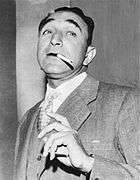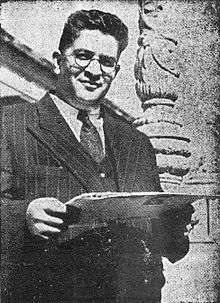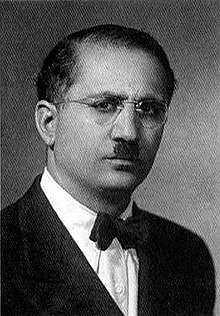Iranian legislative election, 1960
|
| ||||||||||||||||||||||||||||||||
| ||||||||||||||||||||||||||||||||
All 200 seats to the National Consultative Assembly | ||||||||||||||||||||||||||||||||
|---|---|---|---|---|---|---|---|---|---|---|---|---|---|---|---|---|---|---|---|---|---|---|---|---|---|---|---|---|---|---|---|---|
| ||||||||||||||||||||||||||||||||
| ||||||||||||||||||||||||||||||||
Parliamentary elections were held in Iran between 30 July and 20 August 1960.
In order to demonstrate the appearance of a democratic free election, the Shah allowed candidates from the popular National Front to compete,[4] however it returned no seats for them.[5]
The announced result was a massive victory for the Prime Minister Eghbal's Party of Nationalists. The elections "were extensively and clumsily rigged" and the fraud "was exposed in the press, provoked public rancor and restlessness".[6]
Aside from the opposition figures, pseudo-opposition People's Party and a number of independents led by Ali Amini denounced the elections.[6] The results were annulled by the Shah, and fresh elections were held the following year.[1]
Results
Chehabi (1990)
| Party | Seats | |||
|---|---|---|---|---|
| Party of Nationalists | 104 | |||
| People's Party | 25 | |||
| Source: Chehabi[6] | ||||
Zonis (2015)
| Party | Seats | |
|---|---|---|
| Party of Nationalists | 104 | |
| People's Party | 50 | |
| Independents | 3 | |
| Source: Zonis[7] | ||
See also
References
- 1 2 Azimi, Fakhreddin (December 13, 2011) [December 15, 1998]. "ELECTIONS i. UNDER THE QAJAR AND PAHLAVI MONARCHIES, 1906-79". In Yarshater, Ehsan. Encyclopædia Iranica. 4. VIII. New York City: Bibliotheca Persica Press. pp. 345–355. Retrieved March 15, 2016.
- ↑ گاهنامه پنجاه سال شاهنشاهی پهلوی [Chronology of the fifty-year Pahlavi Kingship] (in Persian). 3. Paris: Soheil Press. 1986. p. 1107.
- ↑ Nohlen, Dieter; Grotz, Florian; Hartmann, Christof (2001). "Iran". Elections in Asia: A Data Handbook. I. p. 68. ISBN 0-19-924958-X.
- ↑ Kristen Blake (2009). The U.S.-Soviet Confrontation in Iran, 1945-1962: A Case in the Annals of the Cold War. University Press of America. p. 143. ISBN 0761844929.
- ↑ Donald Newton Wilber (2014). Iran, Past and Present: From Monarchy to Islamic Republic. Princeton University Press. p. 233. ISBN 1400857473.
- 1 2 3 Houchang E. Chehabi (1990). Iranian Politics and Religious Modernism: The Liberation Movement of Iran Under the Shah and Khomeini. I.B.Tauris. pp. 144–146. ISBN 1850431981.
After many postponements, balloting finally began in the provinces on July 26, and by August 12, when the last results came in, the prime minister's Melliyun party had obtained 104 seats, and the "opposition" Mardom party won about 25. But two provincial towns had not voted: Kashan, where the IP's leader Allahyar Saleh was running, and Kerman, where Mozaffar Baqa'i was a candidate.
- ↑ Zonis, Marvin (2015). Political Elite of Iran. Princeton University Press. p. 71. ISBN 9781400868803.
For as the election campaigns wore on, the party candidates took their roles seriously and began unbridled attacks on their opposite numbers. When the election results were announced, then, they were greeted with an uproar of dismay. As if the heated campaign had not been held, the shah-sponsored Prime Minister Eghbal's Melliyun party won 104 seats in the Majles, The Mardom party led by Asadollah Alam captured fifty seats and the independents but three seats
This article is issued from
Wikipedia.
The text is licensed under Creative Commons - Attribution - Sharealike.
Additional terms may apply for the media files.



